Country chicken farming, also known as desi hen farming, has been practiced in India for decades. Local birds are typically raised in backyard poultry. Compared to conventional broiler and layer farming, these birds have historically had a low egg and meat production capability. However, better strains result in a significant performance improvement. The most appealing aspects of country chicken are the modest initial investment and substantial economic returns.
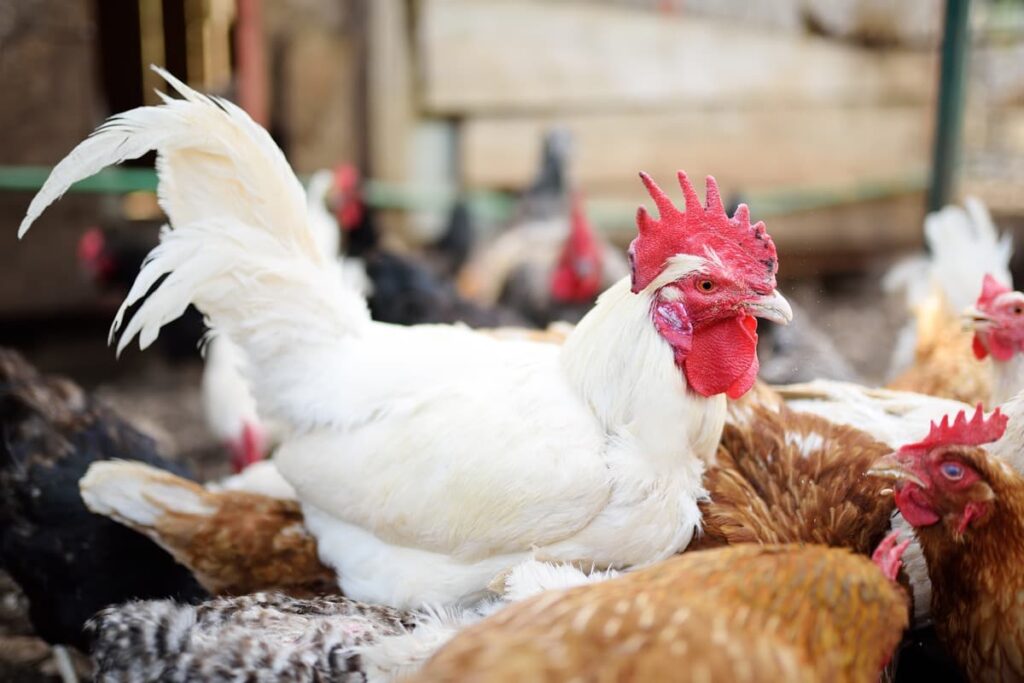
India’s per capita protein intake has been a source of worry for a long time. The cheapest and most readily accessible options are eggs and chicken meat. Traditional country birds produced in an integrated farming sector at the pond bank will provide the nutritional demands of impoverished communities. Farmers will have access to resources for the rest of their life because of this.
Furthermore, rural chicken farming may be combined with fish farming. Water and terrain are entirely used in this manner. The birds that grew up on the pond’s bank will act as fertilizer machines, enriching the pond’s nutritional status and increasing productivity. Integrated farming systems create job opportunities while lowering costs. Despite a tremendous increase in poultry production over the last few decades, rural poultry has mostly stayed the same.
This is because it has been a mostly ignored area. Focusing on diverse areas of parenting, improved management methods, and a scientific approach are the keys to success. This blog post will guide you through the country chicken farming project report or free-range chicken farming project report in India. Find the country/free range chicken farming project report below.
In case you missed it: Sustainable Poultry Farming: Benefits and How to Reduce Your Carbon Footprint with Chickens
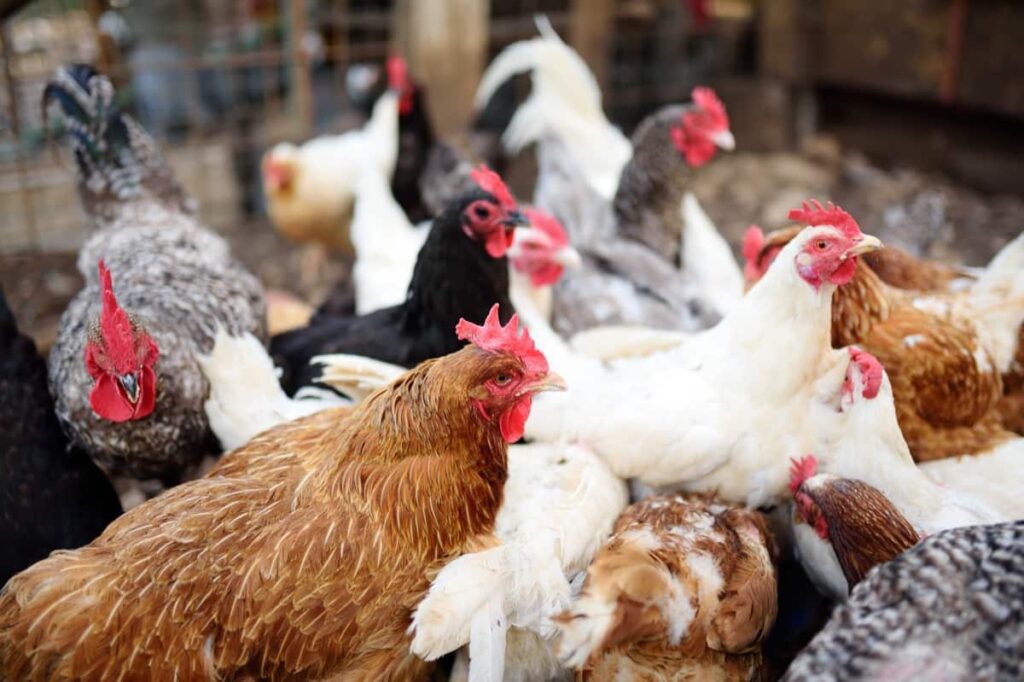
Advantages of Country/Free Range Chicken Farming
Because of the significant demand for local chicken, the birds and eggs they produce may be sold at any time of year in the local market. Low initial investments combined with better economic returns are a winning combination. The demand for country chicken, often known as ‘Desi Murga,’ in north India and brown egg variation is larger than for other breeds.
The quality and taste of the chicken and eggs are substantially greater if the birds are kept on an organic farm. Because the birds are grown in a stress-free environment, this procedure treats chicken wastes such as droppings, surplus feeds, and other wastes directly as organic manure, increasing crop output.
Housing for Country Chickens
Unlike other kinds, country chickens do not require complex house preparations since they are tougher and more flexible. The homes must shield the birds from the elements, such as direct sunlight, rain, wind, and cold. During the winter, it should also guard them against frost. The birds are allowed to graze during the day and confined in confinement at night in a free-range rearing scheme.
Houses must be built in the north-south direction, not the east-west direction, to avoid direct sunlight and encourage optimal air circulation. The floor is raised to prevent water from accumulating and creating flood-like conditions. It must be devoid of rat problems and water cracks and be movable so that the dwellings may be moved if necessary. It must also be easy to clean. A bulb must be installed in the ceiling to keep the chicks warm and give them light.
In case you missed it: Best Package Practices to Grow Chickpeas: Cultivation and Production of Bengal Gram/Chana
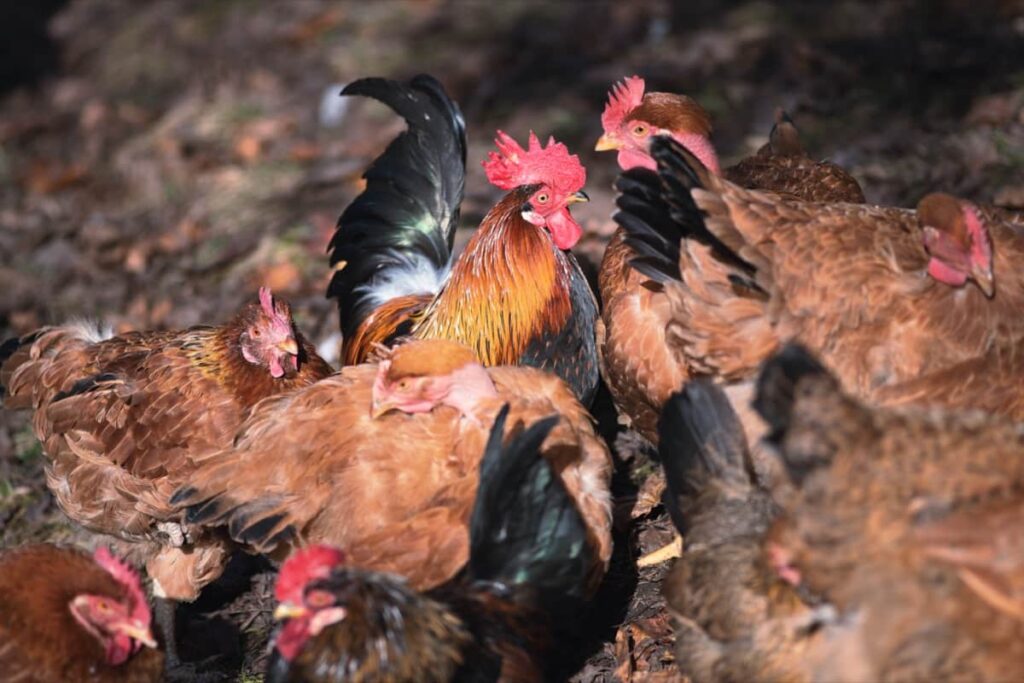
Feed Details for Country Chickens
Feed costs are low with country chicken compared to other types of raising because the birds are allowed to scavenge in the open. During scavenging, they collect and eat worms, insects, weeds, household debris, agricultural residue, and leftover grains to meet their daily dietary requirements of proteins, vitamins, minerals, and energy. Rice bran, broken rice, groundnut straw, and so on can be used as a supplement.
They were fed twice daily. The feed is kept for a month during the rainy season to avoid fungal contamination. An extra 30-60 grams of food supply per day might be given to the birds for enhanced performance. The feed is made with rice polish, wheat residue, and fish feed, and maize to provide vitamin, mineral, and salt requirements. The birds are fed typical beginner food for chicks available on the market during their growing period.
During the growing period, the birds are fed drumstick leaves, waste grains, mulberry leaves, and other foods in addition to the scavenged meal. The average body weight after 120 days must be between 1.3 and 2.4 kg. Furthermore, they must be fed modestly throughout the first several weeks to stimulate their eating habit. It also aids in developing skeletal feathers and a strong immune system.
Brooding
During the first few days, they cannot maintain their body temperature. As a result, additional considerations must be made to preserve body temperature. Brooding is the term for this process.
Natural Brooding
Local broody chickens are utilized as sitters in natural brooding. All of the necessary nesting materials, as well as food and water, are provided to the hen. Incubation is done with eggs from enhanced varieties. The chicks are left with the mother to scavenge once the eggs hatch. Special arrangements are provided for the baby chicken and her mother in the evenings. At any given moment, a broody hen may look after 12-15baby chickens.
In case you missed it: Ayam Cemani Chicken Breed Guide: Characteristics, Cost, Egg Laying, Care,
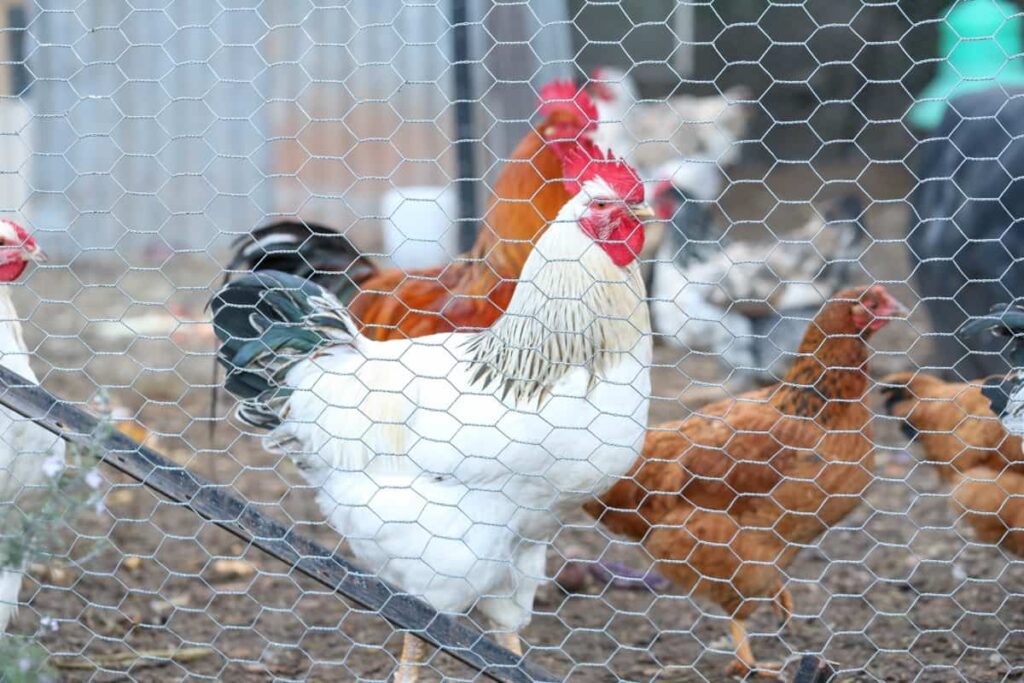
Artificial Brooding
In this situation, no broody hen is employed. Instead, there is a facility for artificial heat to be supplied. Wood, charcoal, kerosene, sawdust, and other heat sources are employed. During the first week, the temperature is kept at 950 °F Fahrenheit. It is lowered by 50°F in the following weeks till the 6th week. In the brooding stage, moderate heat of 2 watts per chick is required.
Beak Trimming
Beak trimming may seem ludicrous, but it is necessary to prevent feed waste and fights between chickens. The third week is when the beak is trimmed, and roughly a third is removed. The most frequent way of beak trimming is to burn the beak using a hot iron. It stops beak growth by destroying the beak growth tissues. It is important not to burn the tongue during this process.
Care for Chickens
From 1-7 Weeks
For country chickens, this is their growing season. With 95 degrees Fahrenheit heat, the hens shed should be able to keep up to 300 chicks. Broken rye, rice, sorghum, and maize can be used as chick feed in this situation. To avoid infections in developing hens, we should inject neo-machine and cephalexin. Furthermore, the drinking water should be warm and free of contaminants.
From 8-18 Weeks
The feed supplied to the hens throughout this period will determine the chicken’s weight. It’s critical to ensure that a balanced diet provides the proper quantity of protein. The percentage of fiber in the diet should be 8%, and the energy accessible to chicks should be up to 2700 g/calorie.
Methoni should be given to the hens in their seventeenth week, and the chick’s head should be thrown into the water containing permethrin. If the chickens have a respiratory problem, the permethrin should be mixed with water. Cells and other parasites in the chicken’s head will vanish only then. The solution should also be sprayed over the farm’s floor.
During Summer Season
In the summer, water is scarce. However, there should be no water scarcity when raising rural hens because the country chickens will die if not fed. They, on the other hand, cannot survive without water. Water is consumed twice as a feeder by hens raised for good weight. Hens do not have a natural gland to remove sweat from their bodies. As a result, the hens’ heat will be absorbed through their breathing. As a result, the hens drink a lot of water in the summer. We can give hens glucose or sugar solution to prevent heatstroke, and their thirst for water may increase.
During Winter Season
The ground of the sheds will be cold during the winter. To avoid this, use sawdust on the floor to moderate the ground’s cooling. If the floor is excessively compacted, ammonia gas is produced, which causes eye discomfort in the hens and may result in sickness. As a result, the floor must be kept at a moisture level of 25 degrees.
In case you missed it: Common Poultry/Chicken Diseases, Symptoms, and Treatment: Check How this Guide Helps Poultry Farmers
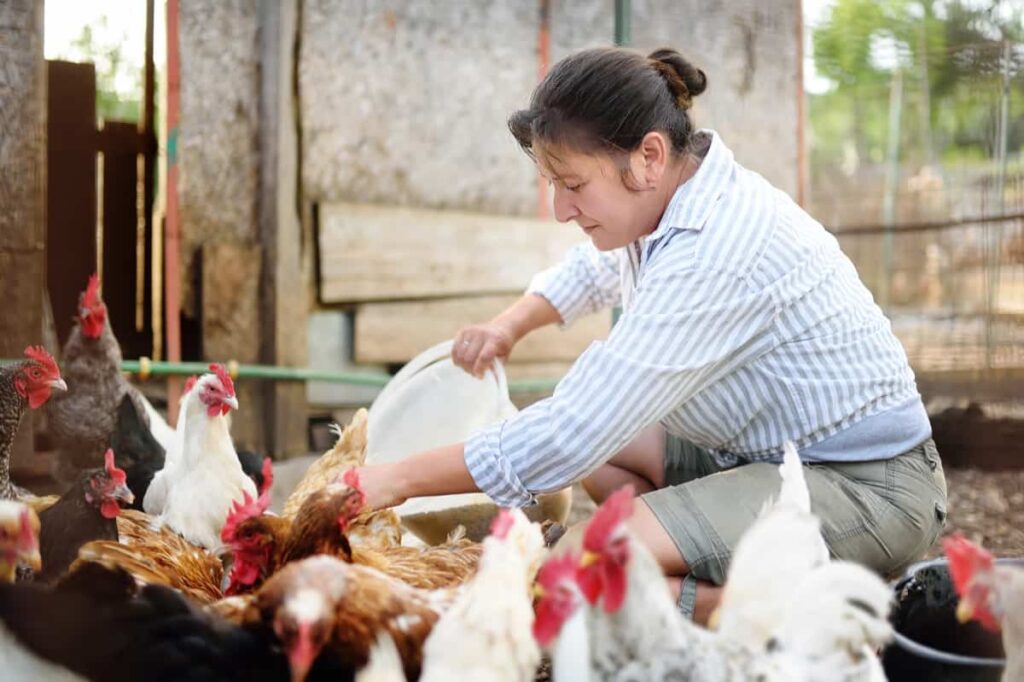
Country Chicken Farming Loans and Subsidies Provided by Banks/NABARD in India
Detailed Project Reports (DPR) are necessary for poultry farming systems with high outlays. Construction of broiler sheds and equipment purchases, cost of day-old chicks, feed, medication, and labour costs for the first cycle are all issues that require investment or financing.
The State Bank of India (SBI) grants loans up to 75% of the entire cost for this operation and up to Rs 3,00,000 for a 5,000 chicken poultry farm. You may get a loan of up to ten lakh rupees from here. This SBI loan must be repaid in five years. If you cannot repay the loan in five years, you will be offered an additional six months. The government provides up to a 25% subsidy for chicken production. This subsidy is up to 35% for SC/ST class students.
Land development, fencing, water and power, storerooms, transport, bird dressing, and processing are all factors that might be considered when granting credit. Borrowers can use the services of NABARD Consultancy Services for high-value projects since they have extensive expertise in preparing Detailed Project Reports.
Country/Free Range Chicken Farming Project Report: Business Plan, Project Proposal, and Profit Calculator
Investment Analysis
| Number of birds | 1000 |
| Birds considered for selling | 950 |
| Mortality rate | 5% |
| Floor space per bird (sq. ft) | 1 sq. ft |
| Cost of construction of shed (Rs/sq. ft) | 150 |
| Cost of construction of storeroom (Rs/sq. ft) | 200 |
| Cost of equipment (Rs. per bird) | 20 |
| Cost of day-old chick (Rs. per bird) | 30 |
| Feed requirement per bird (Kg) | 4kg |
| Cost of feed (average price Rs. per kg) | 40 |
| Medicines, vaccines (Rs/bird) | 5 |
| Labor charges (per person per month) | 10,000 |
| Live weight of the bird (Kg per bird) | 1.8 |
| Sale price (Rs. per bird) | 550 |
| Value of manure per bird sold (Rs. per bird) | 1.00 |
| Interest on a bank loan (% per annum) | 14% |
| Rearing period (weeks) | 8 |
| Cleaning period of a shed | 10-15 days |
In case you missed it: Common Country Chicken Diseases: Symptoms and Treatment
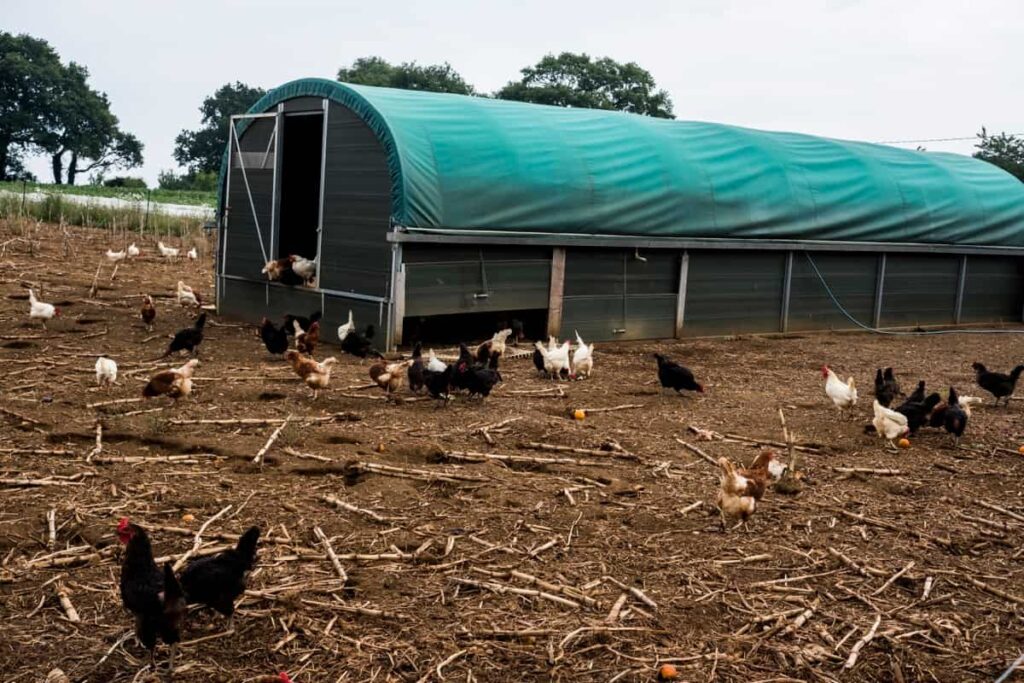
One Time Capital Cost
| Construction of shed (1000 SQ. FT @ Rs.150/sq. ft) | 1,50,000 |
| Storeroom – 300 sq. ft @ Rs.200/sq. ft | 60,000 |
| Cost of the water supply system | 41,000 |
| Equipment cost | 20,000 |
| Total | 2,71,000 |
Running Cost (Yearly)
| Particulars | Capital required (in lakh) |
| Cost of day-old chicks | 30,000 |
| Feed cost | 1,60,000 |
| Medicines, vaccines, and others | 5,000 |
| Labor cost(2 persons) | 20,000 |
| Electricity charges | 15,000 |
| Total | 2,30,000 |
Grand total = Capital cost + Recurring cost = 5,01,000
Bank Loan Details
| Total | 5,01,000 |
| Bank loan (75%) | 3,75,750 |
| Own contribution | 1,25,250 |
Profit Margin
| Income | Amount (in rupees) |
| Sale of birds | 5,50,000 |
| Sale of manure | 1,000 |
| Total | 5,51,000 |
| Expenditure(1st year) | 1,25,250 |
| Expenditure (2nd year) | 2,00,000 |
| Profit (1st year) | 4,25,750 |
| Profit (2nd year) | 3,51,000 |
In case you missed it: Understanding Backyard Poultry/Chicken Farming at Home: Check How this Guide Helps Beginners
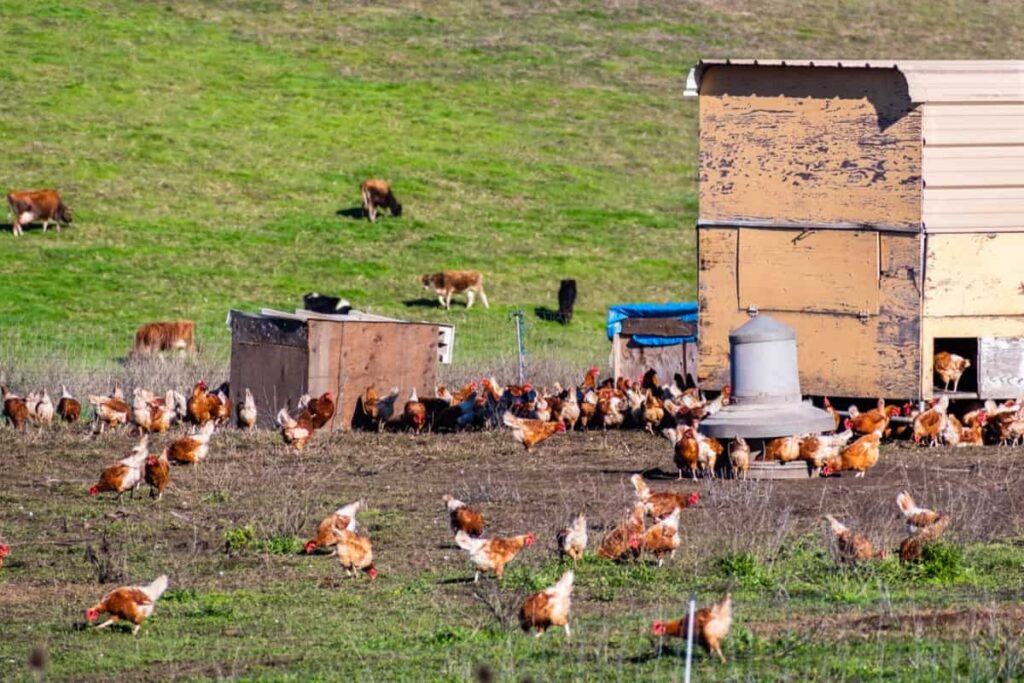
Bank Loan Repayment Schedule
| Year | Loan (in rupees) | Gross surplus (in rupees) | Interest (in rupees) | Principal (in rupees) | Total repayment (in rupees) | Surplus (in rupees) | Balance outstanding loan (in rupees) |
| 1 | 3,75,750 | 4,25,750 | 52,605 | 75,150 | 1,27,755 | 2,97,995 | 3,00,600 |
| 2 | 3,00,600 | 3,51,000 | 42,084 | 75,150 | 1,17,234 | 2,33,766 | 2,25,450 |
| 3 | 2,25,450 | 3,51,000 | 31,563 | 75,150 | 1,06,713 | 2,44,287 | 1,50,300 |
| 4 | 1,50,300 | 3,51,000 | 21,042 | 75,150 | 96,162 | 2,54,838 | 75,150 |
| 5 | 75,150 | 3,51,000 | 10,521 | 75,150 | 85,671 | 2,65,329 | 0 |
Disclaimer: The figures above are completely hypothetical, and they are just assumed (not proven) to yield outstanding results in practice. Any inaccuracies in this project, as well as any decisions or actions taken as a result of utilizing this site, are not our responsibility.
- Profitable Village Farming Business Ideas in 2024
- High-Yield Aquaculture: Fast-Growing Fish for Farming
- Effective Fish Pond Construction Techniques for Beginners
- Irrigation and Water Management in Pineapple Farming
- Blossom to Harvest: Mastering Flowering and Pollination in Papaya Farming
- Pig Fattening Essentials: From Selection to Sale for Beginners
- Raising Wagyu Cattle: A Complete Guide for Premium Beef Production
- Soil Types and Their Water Holding Capacity
- Optimizing Irrigation Schedules for Coconut Groves for Enhanced Yield
- Espresso Your Garden: Coffee Grounds for Healthier Acid-Loving Plants
- The Best Soil Mix for Snake Plants: How to Mix Your Own Snake Plant Soil
- Green Thumb Success: Expert Tips for Cultivating Greenhouse Beans All Year Round
- Bloom All Year Round: The Ultimate Guide to Indoor Hyacinth Care
- Eco-Friendly Gardening: How to Make Liquid Fertilizer from Kitchen Waste
- Ultimate Guide to Grow Anise in Pots: Explore Seed Propagation to Harvesting
- Guide to Raising Chester White Pigs: Discover Breed Facts to Growth Management
- Mastering the Elegance: The Ultimate Guide to Weeping Cherry Tree Care, Planting, and Maintenance
- Ultimate Guide to Planting Garlic in Grow Bags: Growing Strategies for Beginners
- How to Fix Spider Plant Leaf-Related Problems: Natural and Organic Remedies
- 10 Reasons Why Your Tulsi Plant is Shedding Leaves: Home Remedies and Solutions
- Optimizing Growth and Yield: The Advantages of Palm Bunch Ash Fertilizer
- Utilizing Neem Oil Extract as a Natural Pesticide for Hydrangea
- From Soil to Harvest: Various Ways in Which Farmers Can Use AI Tools
- Steps to Encourage and Induce Citrus Flowers: A Comprehensive Guide
- How to Fix Snake Plant Leaf-Related Issues: Natural and Organic Remedies
- Transform Your Garden into a Fragrant Oasis with Raat Ki Rani (Night Blooming Jasmine)
- Discover the Ideal Chicken Breeds for Philippine Farms
- How to Create a Poultry Egg Farm Business Plan for Profits
- Grow Lemon Cucumbers Like a Pro: Insider Techniques for Bountiful Yields
- Ultimate Guide to Caring for Your Pink Princess Philodendron: Tips for Thriving Variegation
- Areca Nut Profit Per Acre: Calculating Yield and Cost of Cultivation
- How Kaveri Chicken is Becoming a More Profitable Breed in Indian Backyards
- Transform Your Barn: 9 Steps to Convert a Horse Stall into a Chicken Coop
- Exploring Suffolk Sheep Disadvantages with Limitations and Challenges
- Guide to Solving Potted Lemon Tree Problems: How to Revive Lemon Tree in Containers
- Steps to Encourage Female Pumpkin Flowers: Best Strategies for More Flowers and High Yields
